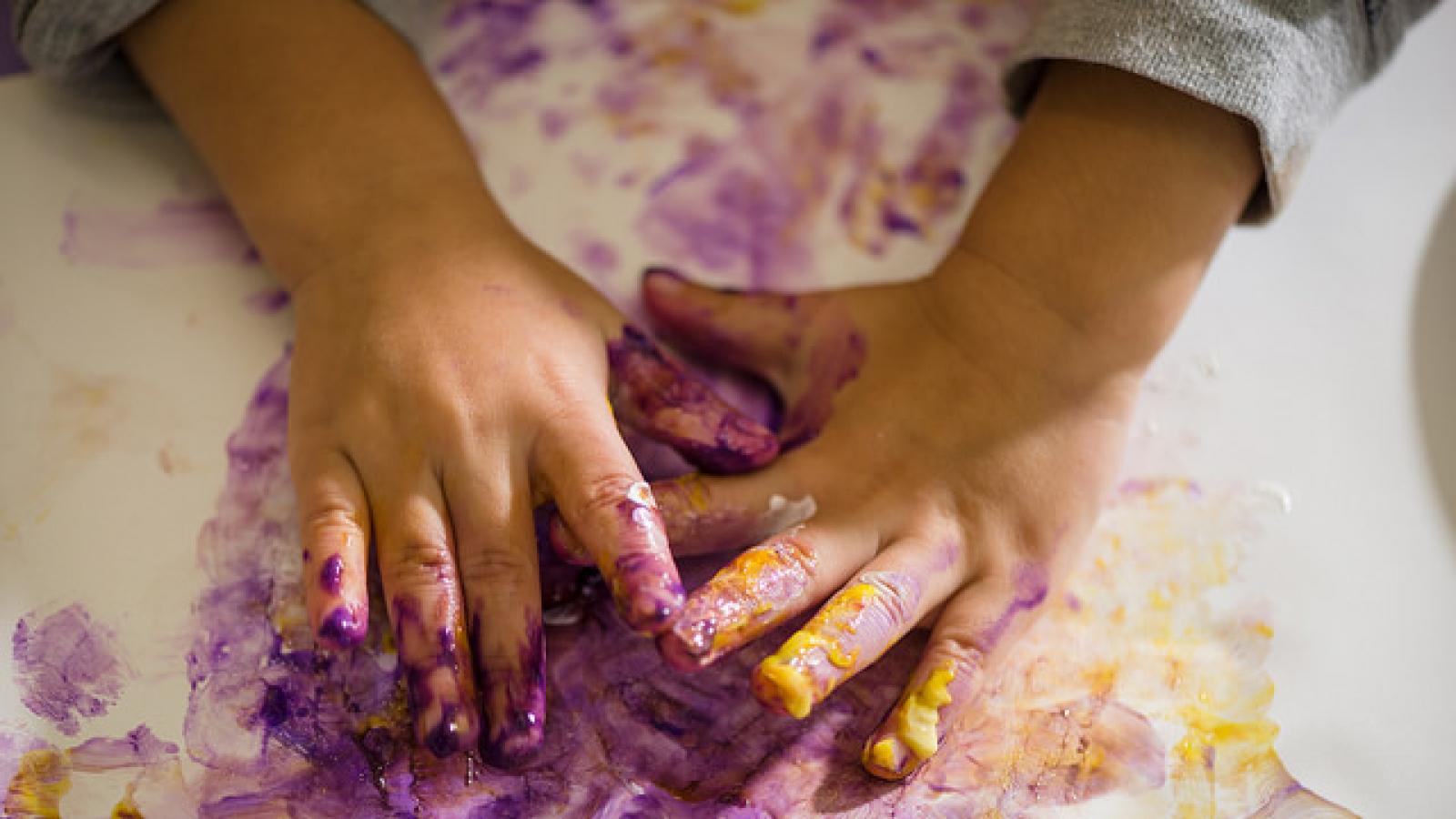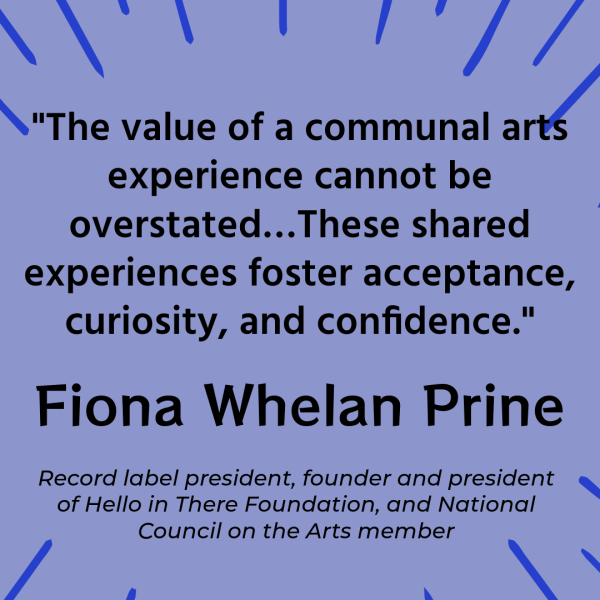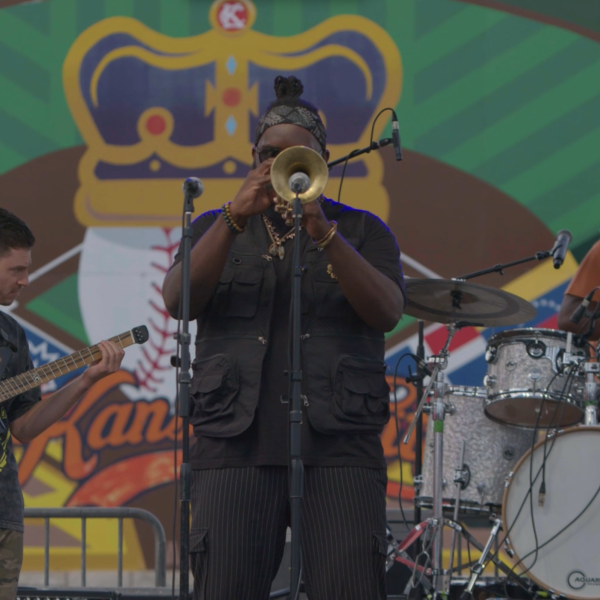Taking Note: To Play’s the Thing

"Let the children boogie." -David Bowie, “Starman”
For years before Every Student Succeeds, which the President signed into law last month, proponents of K-12 arts education were fond of claiming that a federal focus on test-based accountability—particularly for math and reading—had the unintended effect of displacing classroom time spent on “non-tested” subjects.
Yet for the arts, such assertions rarely went beyond anecdote. True, a U.S. Department of Education study (the Fast Response Survey in arts education) showed that availability of visual arts instruction had declined slightly in both elementary and secondary schools. Still, according to the teacher surveys, well over 80 percent of public schools offered visual arts instruction by the late 2000s and in the years just prior to No Child Left Behind (NCLB). Dance and theater instruction had declined, but only slightly in the case of high schools. Music instruction, meanwhile, had experienced no decline, and was still being offered in more than 90 percent of elementary and high schools alike.
Other news was also mixed. A 2011 NEA report documented a drop, from 2002 to 2008, in the share of young adults (18-24) who said they had had arts education in their lives. On the other hand, a 2012 follow-up survey showed, in comparison with 2002 and 2008 data, increases in the share of young adults recollecting education in arts subjects.
Last year, the NEA used an unlikely source to probe the question further: the U.S. Arts and Cultural Production Satellite Account. Based on time-series data from 1998 to 2012, the analysis showed a steep decline in arts education “production” as a share of U.S. GDP. In a research brief, we said the trend likely reflects cutbacks in spending on K-12 public education over the same period. Likely, not assuredly (though we expect an update via a new research brief to be released in a few weeks). The point is that at a national level, the data needed to assess arts education availability in public schools are diverse, diffuse, and ambiguous.
*******************
Now comes a research article, published this month in AERA Open (a product of the American Educational Research Association), which authoritatively tracks the arts’ presence in U.S. public kindergarten classrooms from 1998 to 2010. “We focus on changes over a dozen years, a relatively short period of time but also a period characterized by heightened accountability through the introduction of NCLB as well as increased investment in early childhood education,” the University of Virginia authors write.
The study’s goal, according to the authors, is to lend evidence to the public policy debate “among parents, educators, researchers, and policymakers about the potential benefits and risks of orienting early childhood learning experiences more squarely toward academic content.”
Specifically, “an oft-raised concern is that a focus on academic content might crowd out other important types of learning experiences that help develop social and regulation skills or foster physical and mental health, each of which is a predictor of children’s longer-term outcomes.” (An article in the current issue of The Atlantic voices just that concern. In early childhood education, “the preoccupation with accountability has led to a set of measures that favor shallow mimicry and recall behaviors, such as learning vocabulary lists and recognizing shapes and colors…while devaluing complex, integrative, and syncretic learning,” writes Yale University lecturer Erika Christakis.)
The University of Virginia research team uses the U.S. Department of Education’s Early Childhood Longitudinal Study (ECLS-K) database to understand changes in curricular content, classroom materials, and pedagogical approaches, among other factors. For example, while 34 percent of kindergarten teachers in 1998 reported daily music instruction, the rate was down to 18 percent in 2010. For visual art instruction, the rate dipped from 27 percent to 11 percent over the same period. By contrast, the share of teachers who reported daily math instruction grew from 83 percent to 91 percent. (The rates of literacy instruction were roughly the same in both years: around 97 percent.)
Concurrently, there was a marked increase in the share of kindergarten teachers who said their classes had not done other arts activities at all. In 2010, more than a third (37 percent) of teachers reported never having taught dance to their students, compared with 11 percent in 1998. And half of all kindergarten teachers in 2010 said they never did theater activities with their students—up from 18 percent.
Not only has there been a drop in kindergarteners’ time spent on arts subject matter, there may be less space in which to conduct those activities. Although in 1998 about 92 percent of kindergarten teachers reported having an “art area” for their students, 71 percent did in 2010. Similarly, 87 percent of teachers in 1998 reported having a “dramatic play area,” down to 58 percent 12 years later. Science-activity spaces may also be in short supply—64 percent of teachers said they had one in 1998 and only 42 in 2010. Yet high shares of teachers continued to report math/reading space availability in kindergarten classrooms.
The researchers are not content with examining changes in kindergarten instruction over time; they also look at how the arts and other activities are reflected in first-grade teaching and materials. The first thing to notice is that the rates of daily art/music instruction in first grade are far lower than in kindergarten. Even on a weekly basis, the number of share of first-grade teachers reporting dance (or other creative movement) is lower, at 25 percent in 1998 and 22 percent in 2010, compared with the respective shares (58 percent and 43 percent) of kindergarten teachers. Far lower shares of first-grade teachers than kindergarten teachers also reported weekly instruction in theater in both survey years.
Regarding changes in first-grade arts instruction over the 12-year period, the authors offer that compared with the pattern for kindergarten teachers, “we see smaller (but still significant) drops over time in first-grade teachers reporting daily music or art instruction and increases in teachers reporting they never teach [dance or theater].” The article also notes that from 1998 to 2010 the share of first-grade teachers reporting weekly use of art materials declined from 80 percent to 58 percent, and the likelihood of never using musical instruments grew by 19 percentage points over the same period.
The AERA Open article and its implications go far beyond the presence of arts activities in kindergarten and first-grade classrooms. The study also delves into differences in “teacher-directed” versus “child-selected” activities in general, teachers’ beliefs about academic content in early childhood learning, and the use of standardized tests. But even if we now know that the arts have been less present in early learners’ lives, why should it matter?
A report we issued last month, The Arts in Early Childhood: Social and Emotional Benefits of Arts Participation, provides some of the answer. This synthesis of peer-reviewed research published since 2000 will be featured in a Feb. 2 webinar hosted by Grantmakers in the Arts. Click here to register!




